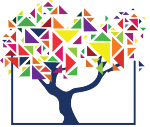
This is a re-post from Redefining Traditional, a community aiming to equip student parents with the tools to navigate their various roles, build a community of support and belonging, as well as providing a space for productive dialogue amongst policy-makers to help reimagine higher education. If you’re interested in contributing to our online community, we encourage you to share your story as a student parent by filling out this form.
Our land acknowledgements series highlights important stories and teachings from each of the Redefining Traditional team members – Heather, Shamim and Kaitlyn. Through these posts, we aim for our community to think about how land acknowledgments are immensely important, and to ensure we engage in teachings about specific cultures beyond a day or month of recognition. We also highlight important questions to support our community so that an acknowledgement moves beyond a ‘script’ and towards an ongoing conversation.

Our final post in this series is by Shamim Ahmed! Our previous two posts are from:
- Heather Watts – who speaks to actionable steps and exercises you can do to move towards meaningful land acknowledgments
- Kaitlyn Corlett – who speaks to her locality as a settler, and ongoing journey with land acknowledgements
Coming to ‘Canada’
I started my journey in Canada as an international student and I previously had no major understanding of the importance of land acknowledgments. I first came to know about land acknowledgments in my first class at the University of Toronto. I got really curious to know about it. Gradually, I learned from my friends and colleagues about the history of Indigenous Peoples and the challenges and difficulties they faced over the centuries on their own land.

Change is Happening
I feel really good to see that changes are taking place and Indigenous communities are being recognized and respected for what they deserve. I am from Bangladesh and there are around 2 million Indigenous Peoples who live in different parts of the country. We have seen how governments in Bangladesh, at different points in time, have tried to bring settlers or non-indigenous folks to Indigenous lands from other parts of the country to promote economic and industrial activities which are not favourable to the culture and societal values of the Indigenous communities.

There is a growing number of civil society organizations who are now being vocal to restore land rights back to Indigenous Peoples and communities. This is to ensure that these communities can decide how to use their land without external forces. Although I believe it’s a long journey to restore the rights of the Indigenous People in Bangladesh, I am hopeful because there is a growing movement that is getting stronger everyday and is amplifying more voices now than ever before.

Locating Myself
I feel myself lucky to become a Canadian Permanent Resident recently and I want to acknowledge the land I am in now – traditional lands of the Wendake-Nionwentsïo, Mississauga, Mississaugas of the Credit First Nation, Anishinabewaki, and Ho-de-no-sau-nee-ga (Haudenosaunee). I believe a land acknowledgment is very important part to start with understanding the importance of being on Indigenous lands, respecting their culture, knowledge, society, values, and bringing these values to everything we do in our personal, professional, and social lives.
Let us all awaken ourselves, do our part to ensure peace and reconciliation, and to learn more about treaties, agreements, land acknowledgements and beyond so that we can be responsible and active in our lives.
0 comments on “Redefining Traditional: The Importance of Meaningful Land Acknowledgments (Part Three)”